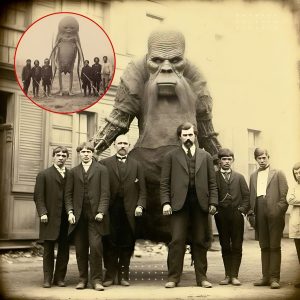The 1903 Delhi Durbar was a grand event orchestrated to celebrate the coronation of King Edward VII as the Emperor of India. It was a display of British colonial might and Indian princely splendor, filled with vibrant ceremonies and majestic processions. However, among the elephants, jewels, and royalty, it was two towering figures from Kashmir that captivated the attention of everyone present. These two men, standing at 7’9” (2.36 m) and 7’4” (2.23 m), were not just remarkable for their height but for the roles they played as guards and riflemen for the King of Jammu and Kashmir.

The Delhi Durbar was an elaborate event, taking nearly two years to plan. It commenced with a magnificent procession of elephants through the streets of Delhi on December 29, 1902. This was followed by the main coronation event on January 1, 1903, which took place on a vast plain outside the city. Indian princes and kings, alongside British dignitaries, gathered to witness the pomp and ceremony. The Durbar was intended to showcase the grandeur of the British Empire and its Indian territories, featuring a dazzling array of precious jewels.

Lord Curzon, the Viceroy of India at the time, meticulously planned the event. Despite the absence of King Edward VII, who declined to travel to India, Curzon ensured the spectacle was unmatched. The highlight of the event was the grand parade of Indian royalty on elephants, but the real showstoppers were the two giant guards from Kashmir.

The two Kashmir giants, twin brothers, were a phenomenal sight. Standing at heights of 7’9” and 7’4”, they were the tallest men of their time. Their presence at the Durbar drew immense attention from the crowd, overshadowing even the grandest of elephants adorned with golden candelabras. These giants were not only a testament to their unique genetic stature but also skilled riflemen dedicated to serving their king.
Hailing from a place known as Balmokand, the brothers brought with them an arsenal of weapons, showcasing their readiness to protect their ruler. Their impressive height and formidable appearance made them the center of attention, capturing the fascination of journalists and photographers from around the world.

The Kashmir giants’ appearance at the Durbar had a lasting impact. They were featured in numerous newspapers and articles, spreading their fame far beyond India. The Brisbane Courier highlighted their presence, describing them as part of the retinue of the ruler of Kashmir. American traveler and photographer James Ricalton was particularly captivated by them, documenting their extraordinary stature in photographs that emphasized their towering heights.
.webp)
Ricalton, along with photographer George Rose, traveled to Kashmir to capture more images of these giants. One striking photograph showed the tallest giant alongside the shortest dwarf, with Ricalton himself included for scale. This image vividly illustrated the incredible height difference, further cementing the giants’ place in history.





